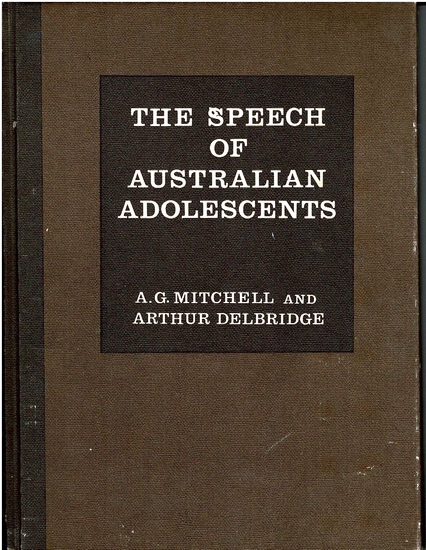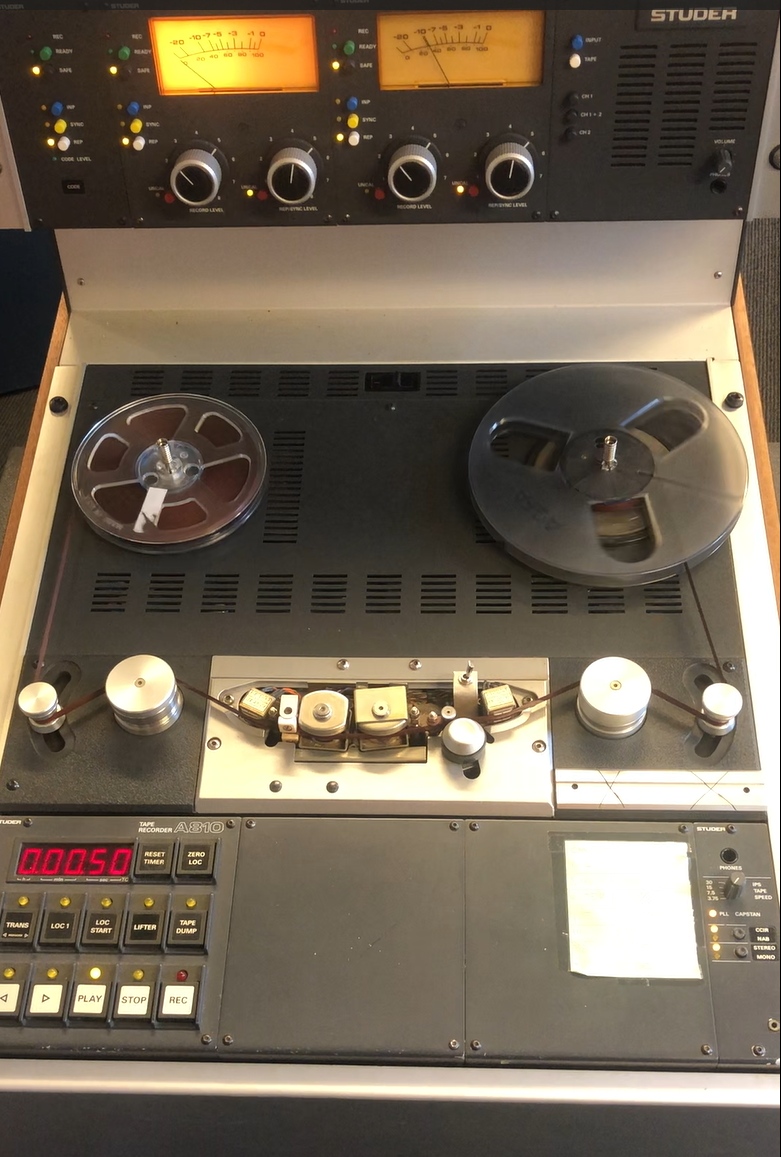by Bridey Lea
In a previous blog post, we wrote about what happened to the Australian National Corpus (AusNC). One component of AusNC, The speech of Australian adolescents: research data and recordings collected by A.G. Mitchell and Arthur Delbridge in 1959 and 1960, was an early addition to our data portal. Read on to find out more about the history of the Mitchell and Delbridge corpus, and its impact on Australian linguistic research.
Broad, general and cultivated speech
In 1959, linguists A.G. Mitchell and Arthur Delbridge wrote to hundreds of Australian high schools asking them to document student speech. Teachers around the country recorded students in their last year of school on reel-to-reel tape reading a selection of words and sentences, as well as participating in a short informal conversation. The collection from this process encompasses 22,187 recordings of Australian English spoken by 7,736 students at 330 public, Catholic and Independent schools. The sample had roughly equivalent numbers of boys and girls, and representation from each type of school reflected nation-wide enrolments (68% from public schools, 18% from Catholic schools and 14% from Independent schools). Almost 46% of the sample came from New South Wales, while the smallest number of recordings were from Tasmania (3%) and Western Australia (2.5%). No students from the Northern Territory were included in the study.
To conduct the study, Mitchell and Delbridge selected two sentences and six words which included sounds that would capture variation in vowels between speakers and groups in Australian English. The sentences were:
The plane flew down low over the runway, then increased speed and circled the aerodrome a second time.
Let’s pick a good spot near the water and pass the morning surfing and relaxing in the sun.
The target words were beat, boot, say, so, high and how.
They used this large collection of adolescent speech to support their claim that Australian English inhabited a “broadness continuum”, and that the speech of any individual could be considered to be either broad, general or cultivated. Prior to their study, little scholarly work had identified Australian English as a legitimate object of study within varieties of English. This recognition of the Australian variety contributed to the fact that hearing a range of Australian accents became commonplace in media and politics later in the century.
The data collected helped Mitchell and Delbridge demonstrate that Australian English tends not to have major regional differences (but test your ear with this article on regional accents!), and class and rural/urban divides more strongly influence our ways of speaking. Their classification of three (overlapping) categories of speech mapped to a broadness continuum has since been very influential in Australian linguistics, including in phonetic transcription conventions for Australian English vowels (the Mitchell-Delbridge system).

Image Source: Louella Kerr Books
Rescuing an at-risk dataset
The reel-to-reel tapes from the study, as well as accompanying paper documents, were stored for several decades in The University of Sydney (USyd) Phonetics Laboratory. When the Phonetics Laboratory moved site, the tapes ended up in a glass cabinet in a hot corridor; the paper records were lost in the move.

Image Source: Bridey Lea
In the late 1990s, members of the Linguistics Department who recognised the value of the collection took steps to improve its condition — by moving it to an air-conditioned space and organising digitisation by the National Film and Sound Archive. Because of its location and the deteriorating condition of the tapes, the dataset had not been used since Mitchell and Delbridge’s initial research.
The digitised corpus was reissued as an online database by USyd in 1997–1998. The database is still available, but not easy to find. Part of the collection was then made accessible online via AusNC (through Griffith University) between 2012 and 2023. At the dissolution of AusNC, LDaCA initiated discussion with the USyd Library, which resulted in almost all of the collection being made accessible in the LDaCA data portal.
Australian speech since Mitchell and Delbridge
The work of Mitchell and Delbridge brought recognition to Australian English as a variety within World Englishes. Access to their dataset has since allowed linguists to enter into dialogue with them, and to support and challenge their findings. For example, Mark Durie and John Hajek proposed a revised phonemic orthography in 1994 that was less influenced by British English. Harrington, Cox and Evans (1997) later used acoustic analysis to develop an alternative phonemic transcription system to the Mitchell-Delbridge system for Australian vowels (the HCE system). Some scholars, such as Barbara Horvath in her 1985 study of Sydney’s “sociolects”, have also pointed out that the model of the broadness continuum no longer captures the multicultural and multilingual realities of Australian society. Projects like Sydney Speaks extend on this work, diving into the cultural and linguistic diversity of Australian speech.
The Mitchell and Delbridge corpus also offers valuable opportunities for longitudinal comparison, allowing us to examine the ways Australian English has changed over time. For instance, Cox and colleagues (2014) used the corpus in this way to investigate how the distribution of speakers across the broadness continuum has changed since the 1960s.
Despite some of the difficulties of legacy data — in this case, the collection lacked the kinds of participant permissions we would require today and also has variable sound quality because of variation in recording equipment and deterioration in storage — it can have long-term research value. When historically significant collections like the Mitchell and Delbridge corpus are made accessible, transformed from deteriorating tapes gathering dust to sustainable digital datasets, humanities researchers can start to ask new questions and answer old ones.
References
Cox, Felicity, Sallyanne Palethorpe, and Samantha Bentink. 2014. “Phonetic Archaeology and 50 Years of Change to Australian English /iː/.” Australian Journal of Linguistics 34 (1): 50–75. https://doi.org/10.1080/07268602.2014.875455.
Durie, Mark & John Hajek. 1994. “A revised standard phonemic orthography for Australian English vowels.” Australian Journal of Linguistics 14 (1): 93–107. https://doi.org/10.1080/07268609408599503.
Harrington, Jonathan, Felicity Cox, and Zoe Evans. 1997. “An acoustic phonetic study of broad, general, and cultivated Australian English vowels.” Australian Journal of Linguistics 17: 155–184. https://doi.org/10.1080/07268609708599550
Horvath, Barbara. 1985. Variation in Australian English: the sociolects of Sydney. Cambridge; New York: Cambridge University Press.
1 Thanks to Teresa Chan and Simon Musgrave for their helpful comments. ↩
